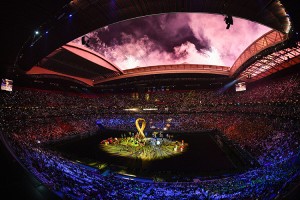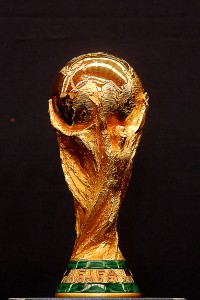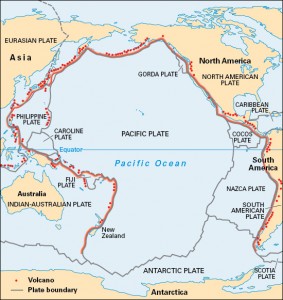Qatar Hosts the 2022 FIFA World Cup
Monday, November 21st, 2022

A general interior overview during the opening ceremony prior to the Group A – FIFA World Cup Qatar 2022 match between Qatar and Ecuador at Al Bayt Stadium on November 20, 2022 in Al Khor, Qatar.
Credit: © Pablo Morano, BSR Agency/Alamy Images
Soccer‘s World Cup tournament for men, held every four years to determine the best team in international soccer, began on Sunday. The first match featured the team of the host country, Qatar, against Ecuador.
The tournament runs from November 20 to December 18 and will be held in six Qatari cities: (1) Al Khor, (2) Al Rayyan, (3) Al Thumama, (4) Al Wakrah, (5) Lusail, and (6) Doha. Favorites for this tournament include the teams from Argentina, Brazil, England, France, Germany, the Netherlands, Portugal, and Spain.
Qatar was chosen to host the 2022 World Cup. It became the first Middle Eastern country to host the World Cup. Qatar is a small Arab country in southwestern Asia. It occupies a peninsula that juts from eastern Arabia into the Persian Gulf (commonly known as the Arabian Gulf in Arab countries). Doha is Qatar’s capital and largest city.
Over two-thirds of Qatar’s people were born in other countries. The native-born people are called Qataris. Qatar’s economy depends largely on oil and natural gas. Since the 1950′s, the government has earned a large amount of income from oil exports and has used it to develop Qatar. Qatar ranks among the richest nations in terms of average income per person. The government provides free education, free health care, and housing for the poor.
The first match was held in Al Khor. Ecuador defeated Qatar 2-0, the first opening-game loss of a host country in the World Cup’s history. Ecuador’s striker Enner Valencia scored both goals.

The FIFA World Cup is the most important international competition in soccer. The year and name of each FIFA World Cup winner since 1974 is engraved on the underside of the trophy. A different trophy records the winners of the FIFA Women’s World Cup, which began in 1991.
Credit: © Alfredo Lopez, Jam Media/LatinContent/Getty Images
In the men’s FIFA World Cup, qualification tournaments begin three years before the final competition. The qualification tournaments are organized in six geographical zones. These six zones are (1) Africa, (2) Asia, (3) Europe, (4) North America, Central America, and the Caribbean, (5) Oceania, and (6) South America. The tournament finals bring together the 32 teams that qualify. The host country receives an automatic berth. In 2026, the tournament finals will be expanded from 32 teams to 48 teams.
The 32 teams that qualify are placed into eight groups, with each group having four teams. Each team plays the other three teams in their group. These matches are played at various locations throughout the host country. The two teams with the best record in each of the eight groups advance to the knockout stage. The knockout stage is a single-elimination tournament—that is, a team is eliminated after losing one game. As the competition progresses, teams are eliminated until two teams qualify for the final match. The televised men’s final is the most popular single sports event in the world.
Uruguay won the first men’s FIFA World Cup in 1930. The World Cup was not held in 1942 and 1946 because of World War II (1939-1945). Brazil has won the World Cup five times (1958, 1962, 1970, 1994, 2002), more than any other country.




